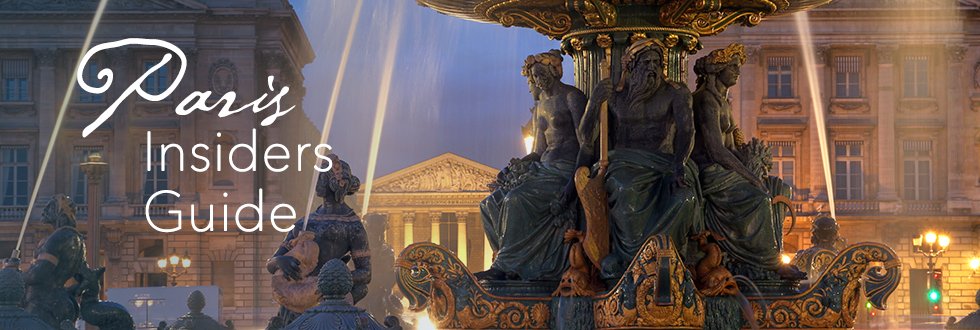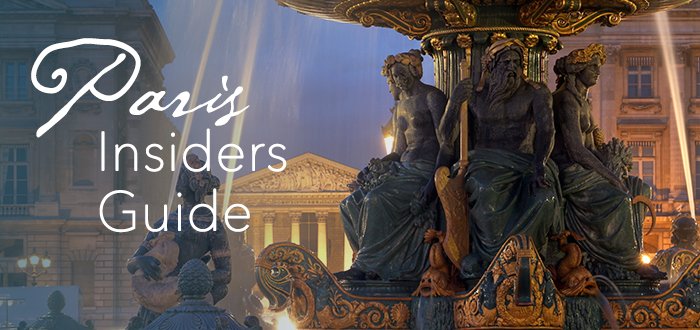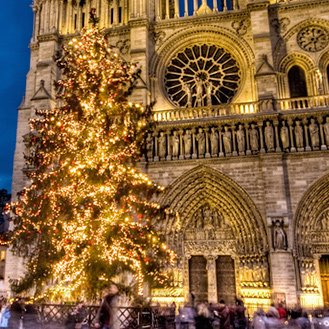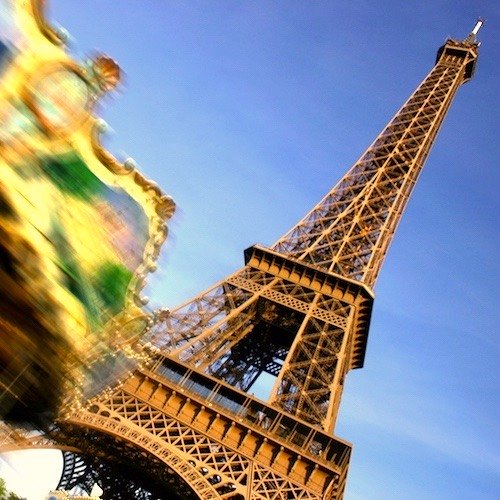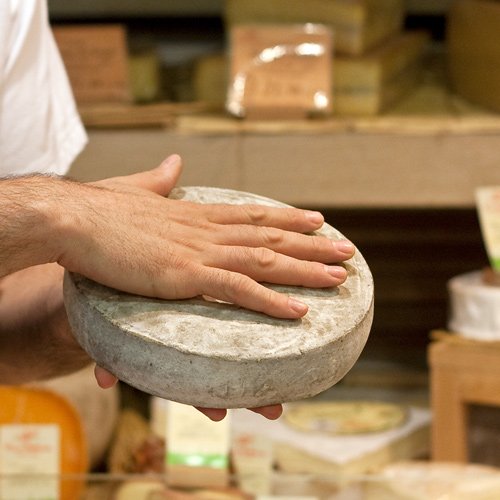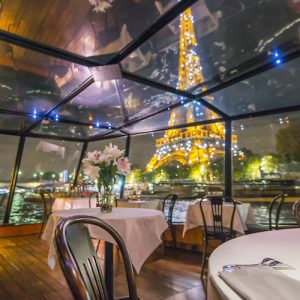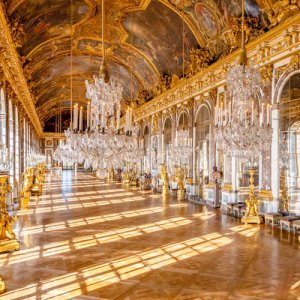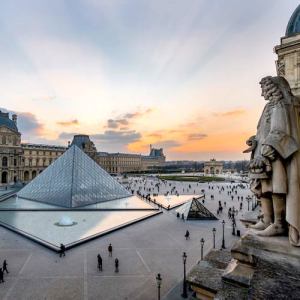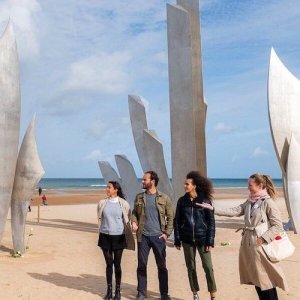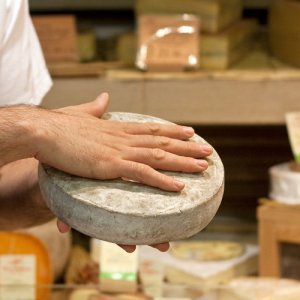Arab World Institute Paris – Where Culture Meets Innovation
Tucked between the Seine and the Sorbonne, the Arab World Institute Paris isn't just another museum with pretty pictures and polished artifacts. This one talks back — through architecture, through light, through centuries of history and culture. It's a place where Arab heritage meets French flair in a building that kind of winks at you.
Designed in the 1980s but still looking fresh, the IMA (that's "Institut du Monde Arabe" to its friends) stands as a shimmering statement on the Left Bank. And it's not just for museum-goers — it's for rooftop gazers, couscous chasers, and anyone curious enough to take a detour from the usual Parisian loop.
![]()
Discover What's On When You're Here...
• January... |
• February... |
• March... |
• April... |
• May... |
• June... |
• July... |
• August... |
• September... |
• October... |
• November... |
• December... |
Discover What's On When You're Here
• January...
|
• February... |
• March... |
|---|---|---|
• April... |
• May... |
• June... |
• July... |
• August... |
• September... |
• October... |
• November... |
• December... |
A Visionary Bridge of Culture
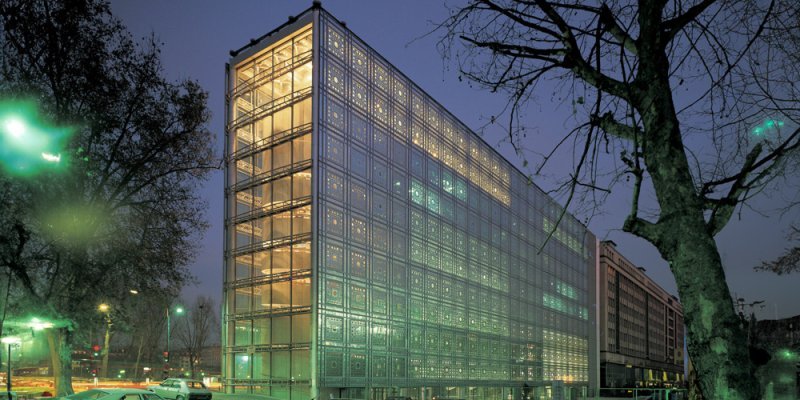 Arab World Institute Paris exterior at night, original photo Architecturestudio
Arab World Institute Paris exterior at night, original photo Architecturestudio
Arab World Institute Paris was born out of something rare: diplomatic optimism. In 1987, France and 18 Arab League countries decided to create a space where culture, dialogue, and intellectual exchange could flourish. So they built this bold glass-and-steel tribute to connection — no small feat in a city built on stone and old secrets.
The mission? To promote Arab culture past and present, from ancient manuscripts to modern poetry slams. And they do it without a hint of stuffiness. Through debates, exhibitions, educational programs, and some toe-tapping concerts, the IMA keeps things fresh.
The institute also plays a symbolic role — a reminder that France and the Arab world have always had complicated ties, full of trade, tension, and tango. But here, the focus is on mutual respect and shared stories.
Jean Nouvel's Light and Shadow Show
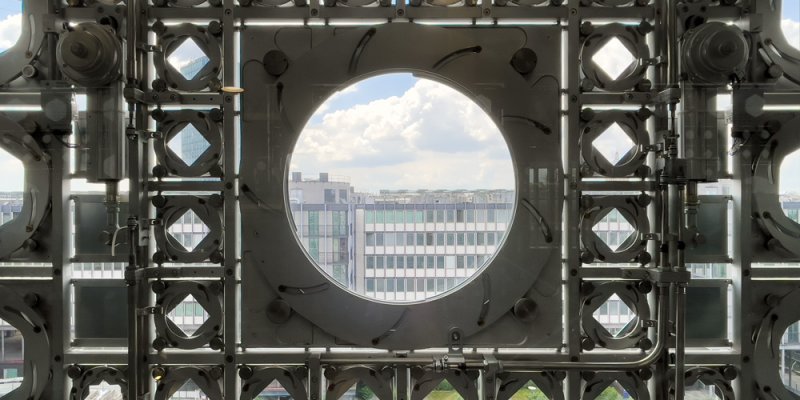 One of the mashrabiya panels on the Institut du Monde Arabe, photo by Mark Craft
One of the mashrabiya panels on the Institut du Monde Arabe, photo by Mark Craft
Jean Nouvel didn't just design a building; he dropped the mic on Paris architecture. The Arab World Institute Paris architecture by Jean Nouvel picked up big awards like the Aga Khan Award and the Équerre d'Argent for good reason.
Its southern facade is the star of the show — 240 motorized mashrabiya panels that react to sunlight, inspired by traditional Arabic latticework and camera shutters. During the day, light dances across the interior like a disco ball at a philosophy lecture.
The rest of the building continues the East-meets-West narrative: clean glass and aluminum lines paired with motifs from Arabic tradition. Inside, there's a museum, a library, an auditorium, and one very tasty rooftop restaurant. It's a building that changes as you move through it. Just try not to bump into a philosophy student doing an Instagram tour.
A Few Paris Insider Extras That Most Visitors Miss
Here’s one most visitors miss: if you time it right, you can catch a live oud performance in the auditorium, followed by a mint tea on the terrace. It feels like time slows down a bit — Paris does that, sometimes, when the music is good.
And don’t skip the boutique downstairs. It’s not your average gift shop. You’ll find rare books, handmade crafts, perfumes, and jewelry that actually feels wearable. Bonus: you’ll leave smelling better than when you arrived.
One more thing: the building lights up at night. Literally. If you're nearby in the evening, swing back and watch the mashrabiya screens glow like a techy lantern. It’s kind of hypnotic.
The Top-Rated Paris Museum Tours
The Top Paris Museum Tour
Inside the Museum's Treasures
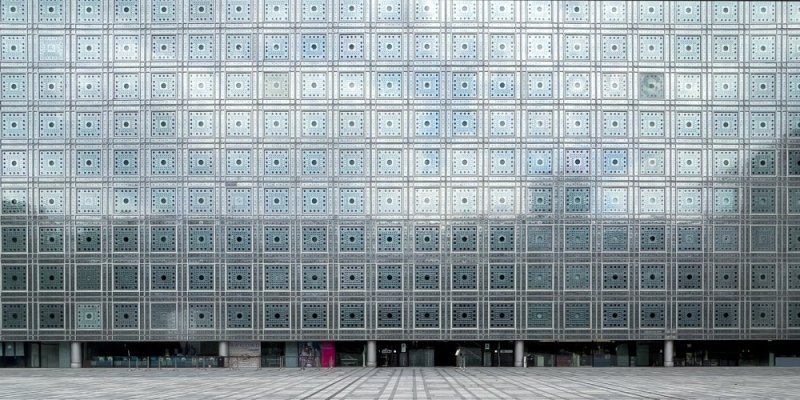 The south facade of Arab World Institute Paris, photo by Mark Craft
The south facade of Arab World Institute Paris, photo by Mark Craft
Museum fatigue? Not here. The Institut du Monde Arabe museum highlights go way beyond dusty pottery and chipped statues (though there's some of that, too). There are more than 1,900 pieces in the permanent collection, ranging from ancient artifacts to modern art that punches you in the soul.
The collection is split into five spicy thematic zones: the birth of identity, religious expression, city life, beauty standards, and the ever-evolving self. It's anthropology with sass.
Temporary exhibitions rotate in with everything from historic textiles to photography straight out of Beirut or Cairo. Past highlights include Algerian modern art, Egyptian cinema retrospectives, and political poster art from the Arab Spring. It's alive, it's angry, it's beautiful.
Music, Books, and Debate
 The library at the Arab World Institute in Paris, photo Wikimedia from Biblioteqye de l'IMA
The library at the Arab World Institute in Paris, photo Wikimedia from Biblioteqye de l'IMA
What happens at the Arab World Institute Paris when people aren't looking at art? Well, a lot. This place has one of the liveliest cultural calendars in Paris.
Start with Arabofolies, a seasonal festival where you'll catch concerts, film screenings, slam poetry, and lectures that run the gamut from mystical Sufism to modern feminism. It's like TED Talks crashed into a music festival.
Then there's the library — public, comfy, and full of treasures. One of the best in Europe for Arab literature, history, politics, and philosophy. It's a quiet corner for the intellectually adventurous.
Feeling inspired? You can take Arabic language classes right here. From casual learners to future diplomats, the IMA offers courses and certifications to suit all levels. Then head to the bookshop for that gorgeous coffee table book or novel you didn't know you needed.
The Rooftop & Dar Mima Restaurant
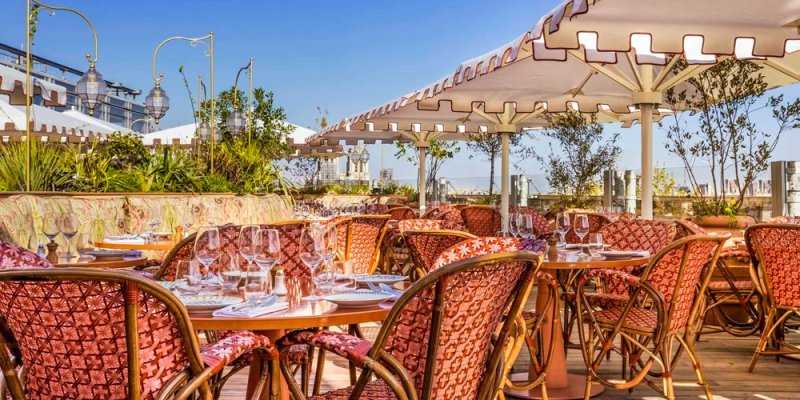 Dar Mima restaurant's rooftop terrace, photo Dar Mima
Dar Mima restaurant's rooftop terrace, photo Dar Mima
Okay, now we're talking. The Arab World Institute Paris rooftop views are hands-down among the best in the city. And the restaurant up there? Also worth a detour — even if you skip the museum entirely.
Dar Mima is the name, and the vibes are North African comfort meets cinematic chic. Actor Jamel Debbouze co-created it as an homage to his mother's recipes, which means couscous, tagines, and delicate pastries served with swagger. It's the perfect combo of soulful and stylish.
While you're sipping mint tea or something a little stronger, take in the view: Notre-Dame Cathedral, the Seine, and Paris stretched out like a well-behaved Instagram filter. Is it worth climbing four floors? No question. Is Arab World Institute worth visiting Paris? That's a "yes" from us.
There's also a café littéraire for lighter bites and reading sessions. Because nothing says "I understand Arab poetry" like doing it with a pistachio pastry.
The Best Paris Activities
The Top Paris Activity
Paris Insiders Tips for Your Visit
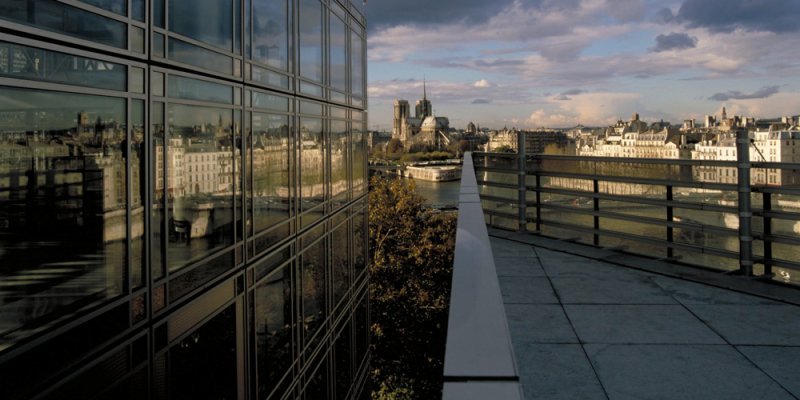 The Institut du Monde Arabe's rooftop view, photo Atelier Jean Nouvel
The Institut du Monde Arabe's rooftop view, photo Atelier Jean Nouvel
Don't just breeze through the museum — plan to linger. Some visitors hit the exhibitions, grab lunch, and then catch a rooftop sunset. That's the move.
If you're a bookworm, the library alone might hold you hostage for an afternoon. Art lovers should check the schedule for temporary exhibitions and live events. Families? The IMA is surprisingly kid-friendly, with programs and workshops that don't talk down to younger audiences.
Got time to spare? Combine your visit with a walk through the Latin Quarter, a stop at the Jardin des Plantes, or a stroll along the Seine. It's all close by — and makes for a proper culture-packed day.
When the Sun Hits Just Right
No visit is complete without pausing on one of the building's upper levels just to watch the mashrabiya patterns shift. As the light changes, so do the shadows, creating a kind of moving art piece across the floors and walls.
Photographers love it. So do toddlers. Even the quietest of visitors find themselves pausing, just to watch the building breathe.
More Than a Museum – A Living Hub
 Interior and displays at IMA, photo Atelier Jean Nouvel
Interior and displays at IMA, photo Atelier Jean Nouvel
The Institut du Monde Arabe isn't just a place you pass through; it's a cultural engine running year-round. Exhibitions come and go, but the building itself hosts ongoing debates, film cycles, artist talks, and collaborations with international institutions. If there's a cultural topic swirling in the Arab world — whether it's music, identity, design, or revolution — you can bet someone's discussing it under this glass roof.
It's not rare to walk in and find a dance rehearsal in one room, a literature roundtable in another, and a student protest out front. The IMA breathes with the rhythms of the city and beyond. It's a gathering space for thinkers, makers, and dreamers.
The Arab World, Room by Room
Wander the museum and you'll quickly realize this isn't a linear, Western-style timeline of “great civilizations.” It's fluid. One room focuses on textiles and design, another on political art. There are prayer niches and sci-fi video installations. Some days you'll see ancient ceramics next to neon Arabic calligraphy.
That's part of what makes the IMA unique: it's not stuck in the past, but it respects it. It acknowledges colonization and diaspora, religious dialogue and resistance movements, and yes, even pop culture. You'll leave with more questions than answers—and that's kind of the point.
![]()
Find Hotel Deals for Your Dates in Paris
Check the complete list of Paris hotels to find current sale prices on rooms in every arrondissement. Save 10%, 20%… or even more! |
Paris Hotel Deals |
Find Hotel Deals for Your Dates in Paris
Save on hotels in every arrondissement of Paris – the Latin Quarter, Saint Germain, the Right Bank, the Marais, near the Eiffel Tower. Save 10%, 20%… or even more! |
Arab World Institute Paris – Landmark of the Left Bank
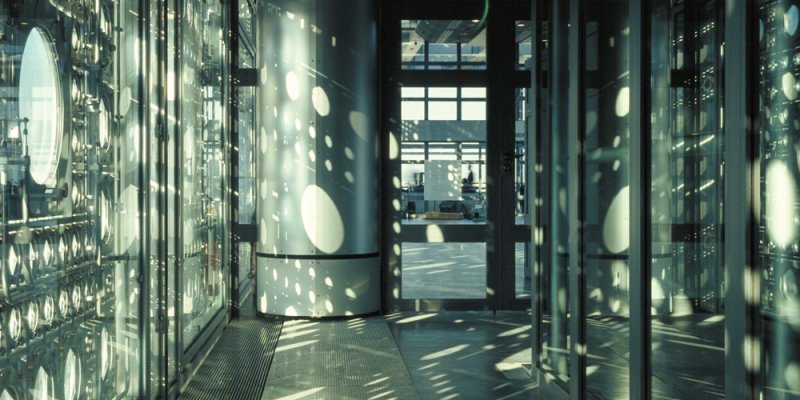 Interior light at Arab World Institute Paris, photo Atelier Jean Nouvel
Interior light at Arab World Institute Paris, photo Atelier Jean Nouvel
It's easy to overlook the IMA in a city so crowded with big names — Louvre Museum, Musée d'Orsay, the Centre Pompidou. But here's the thing: those museums show what France collected from the world. The Arab World Institute shows what the Arab world wants you to see about itself. That difference matters.
And in a district full of Sorbonne students, radical bookstores, and wine-fueled philosophers, the IMA fits right in — thoughtful, stylish, a little rebellious.
Getting There and Final Word
So, how to get to Institut du Monde Arabe Paris? Easiest way is by Metro — Line 7 to Jussieu or Line 10 to Cardinal Lemoine. From there, it's a quick and scenic walk. Buses 24, 63, 86, and 89 also stop nearby. And if you're biking it, you've got a Vélib' station practically out front.
In the ever-spinning wheel of Paris attractions, the Institut du Monde Arabe feels like a breath of thoughtful, delicious, sun-dappled air. It doesn't scream for your attention, but it rewards the curious. Part museum, part think tank, part rooftop dreamscape, the IMA Paris makes the case that culture isn't something you look at — it's something you experience with all your senses.
So go ahead. Chase the light. Order the tagine. And don't forget to look up.
- INSTITUT DU MONDE ARABE PARIS
- 1 Rue des Fossés Saint-Bernard, 75005
- Website…
Paris Planning Guides
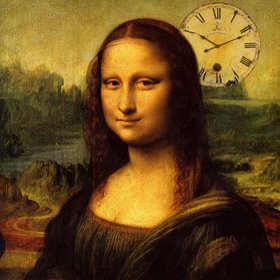 Skip-the-line Louvre Tour
Skip-the-line Louvre Tour |
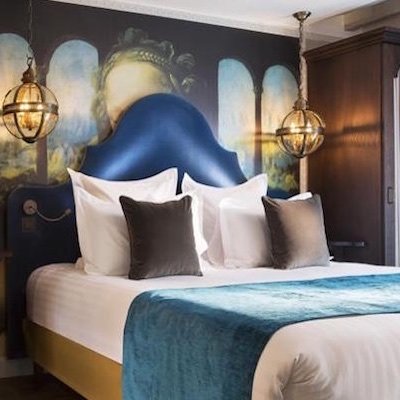 Left Bank Hotels
Left Bank Hotels |
 Paris Arrondissements
Paris Arrondissements |
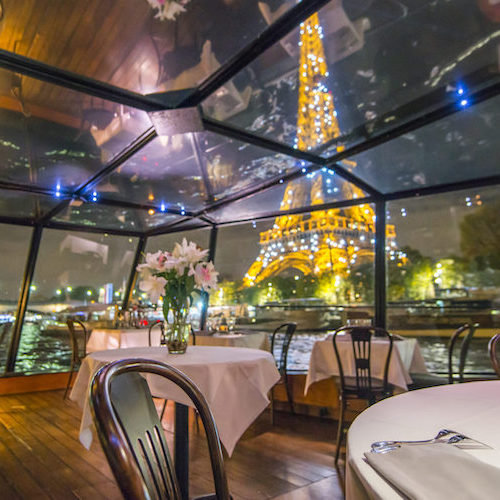 Glorious Dinner Cruises
Glorious Dinner Cruises |
